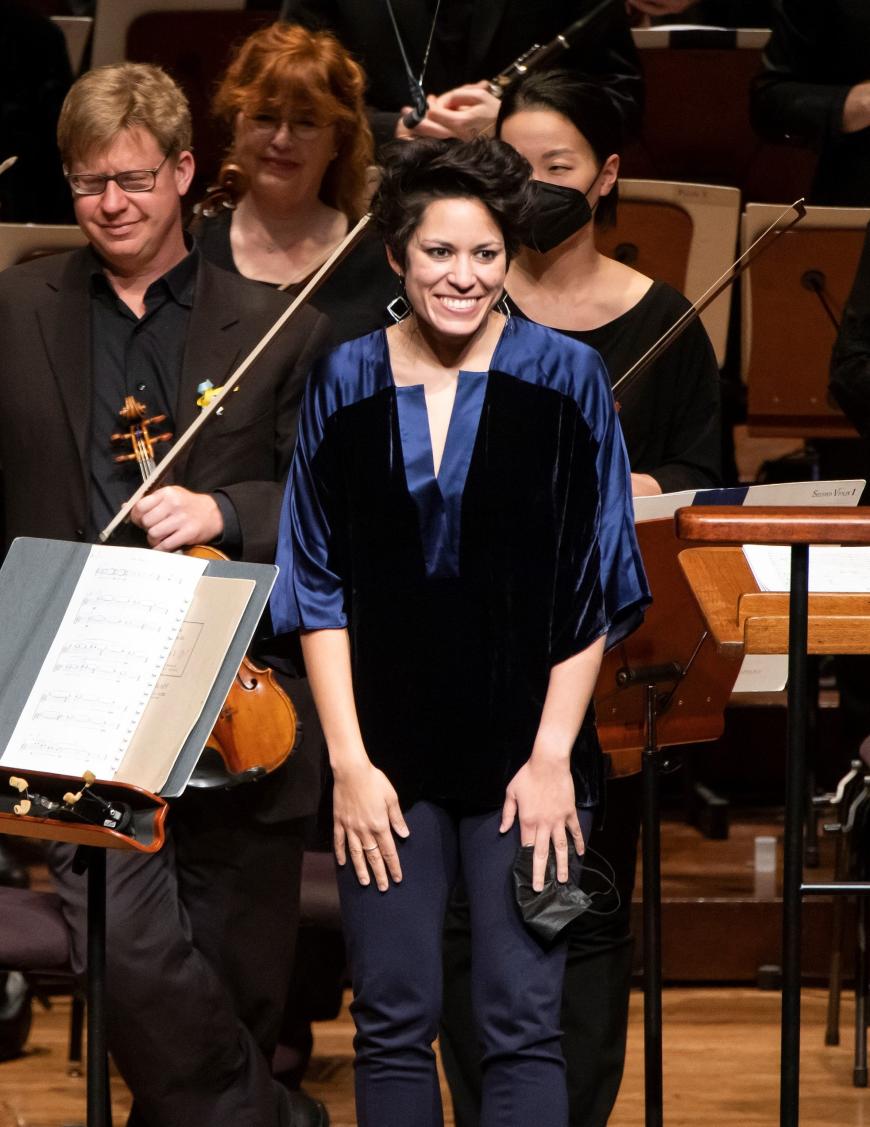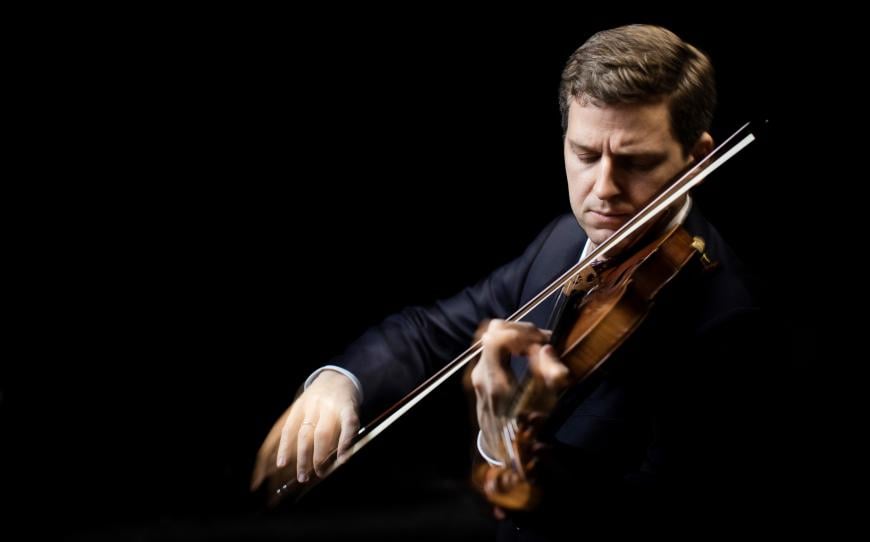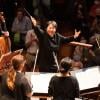
When the San Francisco Symphony got back to work after the holidays, Jan. 12–14, there was nothing business-as-usual about it. Under guest conductor Elim Chan’s activating baton, a well-played, smartly executed program conjured the entrancing atmospheric haze of Elizabeth Ogonek’s Moondog in its world premiere, followed by two Russian works, one from the early 20th century and the other from the late 19th, made to feel new all over again.
Speaking from the stage on Friday evening, Ogonek explained the title of her new 10-minute piece, the final panel of a triptych about “looking up at the sky.” A moondog, she explained, occurs when reflective airborne ice crystals create the illusion of twin orbs, one on either side of the moon.
Right from the start, as the strings softy murmured and glided into blurry tone clusters, the piece offered an inviting imaginative escape from California’s recent relentless storms. A clarinet trill shimmered, as if to summon the piano and harp to life, both entrusted with the main melodic material. As they riffed and expanded on a playful tune, the strings shifted into pizzicato mode, only to revert to their hazy musings.

Moondog employs a substantial and varied orchestration, including a large woodwind ensemble, a complement of four horns, and a percussion battery ranging from vibraphones to log drum to the tiny cymbal-like crotales. Instead of showing off all the hardware, Ogonek uses it like an impressionist painter, blending and integrating sonic colors into a gratifying, unified whole.
In a program note she described a rather detailed visual analog for the piece. But Moondog is anything but strictly programmatic In its own ethereal, gravity-defying way, it opened multiple possibilities, both visual and emotional. The harp, like this beguiling work’s sly sprite, got the last, wistful word.
Soloist James Ehnes took the floor first, in the unaccompanied G-minor passage that begins Sergei Prokofiev’s Violin Concerto No. 2 (1935). He did so not by trying to assert his presence but as a way of opening a conversation, first with a horn solo and then a bassoon response, in a plangent entry into this transparent, light-textured, sometimes eccentric piece, originally conceived as a “concert sonata.”
Ehnes and the orchestra, under Chan’s discerning direction, sustained the quasi-chamber feel of the score throughout. What the performance lacked in pungency and bite it more than made up for in sensitivity, lyricism, and an exploratory sense of wonder.
The second movement was especially choice, with the soloist spinning out a quietly ravishing melody over patiently plucked strings. Later on, the violins sang above the soloist, in a tender descant effect. The closing Allegro, with the odd combo of bass drum and castanets in supporting roles, brought out a sense of capering burlesque in Ehnes’s playing as he danced through some demanding passagework without dropping a step or jaunty accent.
Repeatedly called back to the stage, Ehnes added a pair of encores. He bristled his way through Niccolò Paganini’s Caprice No. 16 and then calmed the torrent with the slow movement from Bach’s Sonata No. 2. If the audience had had its way, he might have gone on all night.

Tchaikovsky’s infrequently programmed Symphony No. 2 of 1872 occupied the second half of the bill. Awash in Ukrainian folk tunes, the piece is familiarly known as the composer’s “Little Russian” symphony. With Russia’s current war on its once captive territory approaching a grueling year’s duration, the SF Symphony made a point of not using the tag for the piece.
Chan’s ebullient reading of the work felt like a celebration of its populist’s folk-tune roots. Even when the music glowered and darkened in Tchaikovsky’s brooding manner, brightness always lay ahead. String passages skittered and surged. The horns let out their burnished cries of affirmation. The woodwinds burbled and chattered. The brass triumphed. Timpanist Edward Stephan drove home this splendid performance’s rhythmic clarity and drive.
From the pert little march tune of the second movement to the captivating development of the earworm melody of “The Crane” in the Finale, the Tchaikovsky of the great symphonies yet to be written could be heard coming into his own here. It was like being present at a creation.



